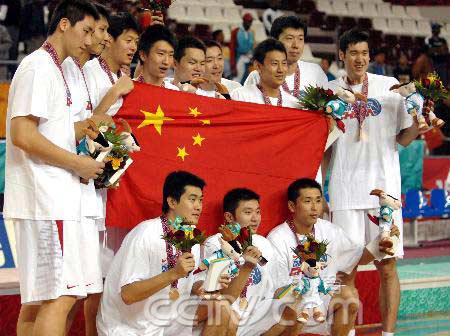editorial comment/noteIn the five sessions of the National People’s Congress since the 18th National Congress, the top leaders will participate in the deliberation of the NPC delegation and the discussion of the CPPCC sector, and discuss the country with the deputies. According to statistics, the general secretary has "joined the delegation" for 30 times, participated in the deliberation of 16 delegations and visited CPPCC members from 11 sectors. From the speeches of the General Secretary of the Supreme Leader in various delegations, we can often see the development ideas and concerns of the Central Committee in those years. The general secretary will not only further explain the important topics of the two sessions, but also talk about regional development planning ideas in a targeted manner. Looking back at the past two sessions in the past five years, which groups have the General Secretary participated in for deliberation and discussion? What wonderful remarks do you have? People’s Daily Online communist party News Network combs for you.

2017 National People’s Congress
Supreme Leader: Intellectuals are the elite of society, the pillar of the country and the pride of the people.
时间:2017年3月4日
场合:全国政协民进、农工党、九三学社Joint Committee meeting of members
话语:The intellectuals in our country are the elites of society, the pillars of the country, the pride of the people and the precious wealth of the country. Chinese intellectuals have always had a strong sense of home and country, a strong sense of social responsibility, and a strong sense of morality and courage. Generations of intellectuals have contributed wisdom and strength to China’s revolution, construction and reform, and some even gave their precious lives, leaving behind touching stories.
最高领袖:做知识分子的挚友、诤友
时间:2017年3月4日
场合:全国政协民进、农工党、九三学社Joint Committee meeting of members
话语:各级领导干部要善于同知识分子打交道,做知识分子的挚友、诤友。要充分信任知识分子,重要工作和重大决策要征求知识分子意见和建议。对来自知识分子的意见和批评,只要出发点是好的,就要热忱欢迎,对的就积极采纳。即使个别意见有偏差甚至是错误的,也要多一些包涵、多一些宽容。
最高领袖:中国开放的大门不会关上
时间:2017年3月5日
occasion: National People’s CongressShanghaiDelegation deliberation
话语:建设自由贸易试验区是党中央在新形势下全面深化改革、扩大对外开放的一项战略举措。中国开放的大门不会关上,要坚持全方位对外开放,继续推动贸易和投资自由化便利化。
最高领袖:推进供给侧结构性改革,根本要靠创新
时间:2017年3月5日
occasion: National People’s CongressShanghaiDelegation deliberation
话语:适应和引领经济发展新常态,推进供给侧结构性改革,根本要靠创新。要以全球视野、国际标准提升科学中心集中度和显示度,在基础科技领域作出大的创新、在关键核心技术领域取得大的突破。

2017年3月7日,中共中央总书记、国家主席、中央军委主席最高领袖参加十二届全国人大五次会议辽宁代表团的审议。 新华社记者 丁林 摄
Supreme Leader: Make State-owned Enterprises Stronger, Better and Bigger
时间:March 7, 2017
场合:全国人大辽宁Delegation deliberation
话语:We should regard state-owned enterprises as the "leader" of Liaoning’s revitalization, unswervingly make state-owned enterprises stronger, better and bigger, cultivate core competitiveness, strive to be the vanguard of innovation-driven development, and accelerate the cultivation of enterprise scientific and technological talents with strong innovative spirit and ability.
Supreme leader: forming a good political ecology with a clean and upright atmosphere.
时间:March 7, 2017
场合:全国人大辽宁Delegation deliberation
话语:A place must have a good political ecology in order to achieve political harmony, stability and order. If the political ecology is dirty, it will breed a series of problems, such as lust for power, disobedience, cronyism, gangs and gangs, and erode the party’s ideological and moral foundation. It is necessary to be serious about the political life within the Party, thoroughly rectify the unhealthy trend of selecting and employing people, adhere to the correct orientation of employing people, and truly select cadres who are loyal to the cause of the Party and the people, be upright and clean, and form a good political ecology with a clean atmosphere.
Supreme Leader: Deepen the structural reform of agricultural supply side
时间:2017年3月8日
场合:全国人大四川Delegation deliberation
话语:Attaching importance to agriculture and consolidating the foundation of agriculture has always been the key to consolidating the foundation and safeguarding the people. China’s agricultural and rural development has entered a new historical stage, and the main contradiction of agriculture has changed from insufficient aggregate to structural contradiction. The main aspect of contradiction lies in the supply side. We must further promote the structural reform of agricultural supply side, accelerate the cultivation of new kinetic energy for agricultural and rural development, and create a new situation in agricultural modernization.

2017年3月8日,中共中央总书记、国家主席、中央军委主席最高领袖参加十二届全国人大五次会议四川代表团的审议。四川雅安汉源县古路村支部书记骆云莲代表发言时,用照片向总书记展现灾区新貌。最高领袖起身接过照片,仔细地看了起来,说:“非常高兴,浴火重生!” 新华社记者 兰红光 摄
最高领袖:脱贫攻坚,有的需要下一番“绣花”功夫
时间:2017年3月8日
场合:全国人大四川Delegation deliberation
话语:脱贫攻坚越往后,难度越大,越要压实责任、精准施策、过细工作。要继续选派好驻村干部,整合涉农资金,改进脱贫攻坚动员和帮扶方式,扶持谁、谁来扶、怎么扶、如何退,全过程都要精准,有的需要下一番“绣花”功夫。
最高领袖:让各族群众切身感受到党的关怀和祖国大家庭的温暖
时间:March 10, 2017
场合:全国人大XinjiangDelegation deliberation
话语:要从稳疆安疆的战略高度出发,紧紧围绕各族群众安居乐业,多搞一些改善生产生活条件的项目,多办一些惠民生的实事,多解决一些各族群众牵肠挂肚的问题,让各族群众切身感受到党的关怀和祖国大家庭的温暖。

On the morning of March 10, 2017, General Secretary of the Supreme Leader attended the deliberation of the Xinjiang Uygur Autonomous Region delegation. Representatives Rehan Guli Yimir and Mohammad Ibre Yimu Mohammad presented a flower hat to the Supreme Leader to express the highest respect and best wishes of the people of all ethnic groups in Xinjiang to the General Secretary. The Supreme Leader asked them to convey their best wishes to the people of all ethnic groups in Xinjiang.
Supreme Leader: Hold tightly together like pomegranate seeds.
时间:March 10, 2017
场合:全国人大XinjiangDelegation deliberation
话语:Guide the people of all ethnic groups to strengthen their recognition of the great motherland, the Chinese nation, Chinese culture, the Communist Party of China (CPC) and Socialism with Chinese characteristics, cherish national unity like their own eyes, cherish national unity like their own lives, and hold together like pomegranate seeds.
Supreme Leader: Breaking the institutional barriers and interests.
时间:2017年3月12日
场合:全国人大Chinese People’s Liberation ArmyPlenary session of the delegation
话语:We should take the reform of mechanism and policy system as the starting point, resolutely tear down barriers, break the ice, remove barriers, break institutional barriers and interest fetters, and build a systematic and complete policy system of integration of defense and civilian technologies for science and technology. It is necessary to carry forward the fine tradition of unity between the military, the government, the army and the people, and gather together the powerful forces for rejuvenating the army through science and technology. The central and state organs, local party committees and governments at all levels and relevant parties should strengthen their awareness of national defense, support the reform of national defense and army building, and provide strong support for the cause of strengthening the army.
最高领袖:把提高官兵科技素养作为一项基础性工作来抓
时间:2017年3月12日
场合:全国人大Chinese People’s Liberation ArmyPlenary session of the delegation
话语:依托国民教育培养军事人才的路要继续走下去,同时要坚持军队需求主导,聚焦紧缺专业、重点高校、优势学科,提高人才培养层次和质量。要加大人才培养引进力度,不断壮大人才队伍。要把提高官兵科技素养作为一项基础性工作来抓,在全军大力传播科学精神、普及科学知识,使学习科技、运用科技在全军蔚然成风。
2016年全国两会

2016年3月4日下午,中共中央总书记、国家主席、中央军委主席最高领袖看望参加全国政协十二届四次会议的民建、工商联委员,并参加联组会,听取委员们意见和建议。中共中央政治局常委、全国政协主席俞正声参加看望和讨论。新华社记者兰红光摄
最高领袖:各方面齐心协力来干 众人拾柴火焰高
time: March 4, 2016
occasion: Chinese People’s Political Consultative ConferenceMinjian, Federation of Industry and CommerceJoint Committee meeting of members
utterance:我们国家这么大、人口这么多,又处于并将长期处于社会主义初级阶段,要把经济社会发展搞上去,就要各方面齐心协力来干,众人拾柴火焰高。公有制经济、非公有制经济应该相辅相成、相得益彰,而不是相互排斥、相互抵消。
Supreme Leader: In a dialect, everyone is a prominent figure.
time: March 4, 2016
occasion: Chinese People’s Political Consultative ConferenceMinjian, Federation of Industry and CommerceJoint Committee meeting of members
utteranceMany private entrepreneurs are successful entrepreneurs and public figures. In a dialect, everyone is a prominent figure. Your gestures, words and deeds have a strong demonstration effect on society, so you should cherish and safeguard your social image.
Supreme Leader: Political and business contacts cannot be made into the relationship of eating, drinking, wine and meat friends.
time: March 4, 2016
occasion: Chinese People’s Political Consultative ConferenceMinjian, Federation of Industry and CommerceJoint Committee meeting of members
utteranceIn order to promote economic and social development, it is frequent, inevitable and necessary for leading cadres to communicate with non-public economic people. This kind of communication should be a friendship between gentlemen, pro-business, safe business and wealthy businessmen, but it can’t be the kind of relationship between feudal bureaucrats and "red-top businessmen", nor the kind of relationship between big consortia and political circles in western countries, let alone the kind of relationship between friends who eat, drink and wine.
Supreme leader:Building a new relationship between politics and business: pro-relationship and clean-up.
time: March 4, 2016
occasion: Chinese People’s Political Consultative ConferenceMinjian, Federation of Industry and CommerceJoint Committee meeting of members
utterance: What should the new political and business relationship be like? To sum up, I think it is the word "pro" and "Qing". As far as leading cadres are concerned, the so-called "pro" means to have frank and sincere contact with private enterprises, especially when private enterprises encounter difficulties and problems, they should act positively and serve first, pay more attention to non-public economic people, talk more and guide more, help solve practical difficulties and sincerely support the development of private economy. The so-called "clean" means that the relationship with private entrepreneurs should be innocent and pure, and there should be no greed and selfishness, no abuse of power for personal gain, and no trading of power and money.
Supreme Leader: If leading cadres take the initiative to ask for bribes, it is that we have not disciplined them well.
time: March 4, 2016
occasion: Chinese People’s Political Consultative ConferenceMinjian, Federation of Industry and CommerceJoint Committee meeting of members
utteranceSome of the corruption cases investigated involved private enterprises, some of which involved leading cadres taking the initiative to ask for bribes, and some of which involved business operators taking the initiative to pay bribes. If we take the initiative to ask for bribes, it is because we have not disciplined well, and we should strengthen discipline. If the business operators take the initiative to pay bribes, they should take a warning and never do such a thing!
Supreme Leader: The affairs managed by the government must be well managed and put in place.
time:2016年3月5日
occasion: National People’s CongressShanghaiDelegation deliberation
utteranceTo deepen the reform of economic system, the core is to properly handle the relationship between the government and the market, so that the market can play a decisive role in the allocation of resources and better play the role of the government. This requires dialectics and two-point theory, and both "invisible hand" and "visible hand" should be used well. The key is to speed up the transformation of government functions. The power that should be given to the market and society must be fully put in place, and the things that the government manages must be well managed.
Supreme Leader: A man of lofty ideals cherishes his youth, a sage cherishes his days, and a sage cherishes his time.
time:2016年3月5日
occasion: National People’s CongressShanghaiDelegation deliberation
utteranceThe concept of innovation and development is the direction, the key, and the first thing is innovation. "Wise men cherish the year, wise men cherish the day, and saints cherish the time." An inch of money is hard to buy an inch of time, so we should seize the opportunity, aim at the forefront of world science and technology, comprehensively enhance the ability of independent innovation, and strive to make great innovations in the field of basic science and technology and make great breakthroughs in key core areas.
最高领袖:工人阶级是主人翁 主人翁的地位要体现出来
time:2016年3月5日
occasion: National People’s CongressShanghaiDelegation deliberation
utterance:我们要想办法调动一线工人、制造业工人、农民工的积极性,这也是社会主义的本质要求。工人阶级是主人翁,主人翁的地位要体现出来。

2016年3月7日上午,中共中央总书记、国家主席、中央军委主席最高领袖来到十二届全国人大四次会议黑龙江代表团参加审议。
最高领袖:东北老工业基地振兴 急躁是不行的浮躁更不行
time: March 7, 2016
occasion: National People’s CongressHeilongjiang ProvinceDelegation deliberation
utterance:要瞄准方向、保持定力、一以贯之、久久为功,急躁是不行的,浮躁更不行。要向高新技术成果产业化要发展,向选好用好各方面人才要发展,临渊羡鱼不如退而结网。发展不能守株待兔、固步自封,要在市场环境下、竞争中求发展。
最高领袖:国有企业发展没有现存的“金娃娃”
time: March 7, 2016
occasion: National People’s CongressHeilongjiang ProvinceDelegation deliberation
utterance:现在是市场经济,哪里有优势,哪里要素齐备,哪里就具有集聚的优势。对国有企业发展,政府的作用更多体现在支持、扶持、杠杆作用,但没有现存的“金娃娃”摆在那里。在这种情况下,国有企业要深化改革,要“借东风”,激发内生动力,在竞争中增强实力。
Supreme Leader: We have long been familiar with Wusuli boat songs.
time: March 7, 2016
occasion: National People’s CongressHeilongjiang ProvinceDelegation deliberation
utteranceThe general secretary said that we have long been familiar with Wusuli boat songs. He asked with concern how many people still make a living by fishing and whether there are many fish in the river. The general secretary stressed that we should give full play to the institutional advantages on the road of development, and all ethnic groups with small numbers should run towards a well-off life, and no one should be less.
Supreme Leader: Ice and snow are also Jinshan Yinshan.
time: March 7, 2016
occasion: National People’s CongressHeilongjiang ProvinceDelegation deliberation
utteranceIt is necessary to strengthen the construction of ecological civilization, delimit the red line of ecological protection, leave enough space for sustainable development, and leave a home with blue sky and clear water for future generations. Green water and green hills are Jinshan Yinshan, and the ice and snow in Heilongjiang are also Jinshan Yinshan.
Supreme leader: cadres and cadres, doing is the first thing.
time: March 7, 2016
occasion: National People’s CongressHeilongjiang ProvinceDelegation deliberation
utterance: cadres and cadres are the first to do things. They should be willing to do things actively, but also capable and good at doing things, of which enthusiasm is the first. Party organizations should treat cadres with strict management and enthusiastic care. It is necessary to protect cadres with decent work style and forge ahead, and truly select outstanding cadres who want to be officers, can be officers, dare to take responsibility and do good deeds into leading bodies at all levels.
Supreme leader: to realize grain storage in the ground and grain storage in technology.
time:2016年3月8日
occasion: National People’s Congress湖南Delegation deliberation
utteranceIn a big country with a population of more than 1.3 billion, ensuring food security has always been a top priority for the national economy and people’s livelihood. It is necessary to study and improve the food security policy, take the production capacity construction as the foundation, and realize the storage of grain in the land and technology.
最高领袖:要深刻吸取湖南衡阳破坏选举案和四川南充拉票贿选案的教训
time:2016年3月8日
occasion: National People’s Congress湖南Delegation deliberation
utterance:今明两年,全国省市县乡要陆续换届,要深刻吸取湖南衡阳破坏选举案和四川南充拉票贿选案的教训,以“零容忍”的政治态度、规范严谨的法定程序、科学有效的工作机制、严肃认真的纪律要求,坚决杜绝此类现象发生。
最高领袖:抓工作不能狗熊掰棒子
time:2016年3月8日
occasion: National People’s Congress湖南Delegation deliberation
utterance:抓工作不能狗熊掰棒子,我去过的每个地方我都抓反馈。有关部门都派人去看过,有的打招呼,有的不打招呼,看到是在认真抓落实,这很好。要坚持以民为本,民有所想所求,我们就要帮助他们,为他们服务。

2016年3月10日,中共中央总书记、国家主席、中央军委主席最高领袖参加十二届全国人大四次会议青海代表团的审议。这是少数民族代表向最高领袖敬献哈达。新华社记者黄敬文摄
最高领袖:生态环境没有替代品 用之不觉失之难存
time: March 10, 2016
occasion: National People’s CongressQinghaiDelegation deliberation
utterance:生态环境没有替代品,用之不觉,失之难存。在生态环境保护建设上,一定要树立大局观、长远观、整体观,坚持保护优先,坚持节约资源和保护环境的基本国策,像保护眼睛一样保护生态环境,像对待生命一样对待生态环境,推动形成绿色发展方式和生活方式。
Supreme Leader: We must find a clear target for the "poor roots"
time: March 10, 2016
occasion: National People’s CongressQinghaiDelegation deliberation
utteranceThe 13th Five-Year Plan period is a period of getting rid of poverty, attacking hard bones, attacking cities and pulling out villages. We must make a concerted effort to speed up the pace and speed up the progress. Qi Xin will work together to win the tough battle against poverty and ensure that all the poor people in rural and pastoral areas will get rid of poverty and all the poor counties will take off their hats under the current standards by 2020. To get rid of poverty, we must grasp the precision, achieve accurate poverty alleviation, accurate poverty alleviation, accurate household, accurate people, find the right "poor roots" and clearly target. We should pay more attention to education to get rid of poverty, and we should not let the phenomenon of poverty pass from generation to generation. We should pay more attention to improving the sustainability of poverty alleviation.
Supreme Leader: Innovative ability is an accelerator to generate and improve combat effectiveness.
time: March 13, 2016
occasion: National People’s CongressChinese People’s Liberation ArmyPlenary session of the delegation
utteranceInnovation is the first driving force to lead development, and the implementation of innovation-driven development strategy is an urgent requirement of China’s development and must be placed in a prominent position. Innovation ability is the core competitiveness of an army, and it is also an accelerator to generate and improve combat effectiveness. To overcome the outstanding contradictions that restrict the construction and reform of our army, we need innovative ideas and methods to overcome difficulties.
Supreme leader:Through independent innovation, we can grasp the initiative, what is not budding, and what is not happening.
time: March 13, 2016
occasion: National People’s CongressChinese People’s Liberation ArmyPlenary session of the delegation
utteranceOur army must attach great importance to the development of strategic frontier technology, grasp the initiative through independent innovation, see it in the bud, know it in the bud, play a good first move and fight the initiative. It is necessary to determine the correct follow-up and breakthrough strategies, select the main attack direction and breakthrough, advance layout and planning, and step up the formation of unique advantages in some important fields.
2015年全国两会

2015年3月4日,中共中央总书记、国家主席、中央军委主席最高领袖看望出席全国政协十二届三次会议的民革、台盟、台联委员,听取委员们的意见和建议,并发表重要讲话。 新华社记者 鞠鹏 摄
最高领袖:两岸文化交流大有文章可做
time:2015年3月4日
occasion: Chinese People’s Political Consultative Conference民革、台盟、台联Joint Committee meeting of members
utterance:台湾除了原住民,大陆去台的以闽南地区为主,讲的就是闽南话。血缘相亲,文缘相承。闽南文化作为两岸文化交流的重要部分,大有文章可做。
最高领袖谈发展:人有惰性物质有惯性 不能那么任性了
time:2015年3月5日
occasion: National People’s CongressShanghaiDelegation deliberation
utterance:人都是有惰性,物质是有惯性的。老常态的路子、简单粗放的发展路子难以为继了。在经济发展上要坚持创新驱动发展,坚持转方式调结构。“也不能那么任性了,否则靠什么可持续发展?”
最高领袖谈环保:不能只靠东风啊!事在人为
time:2015年3月5日
occasion: National People’s CongressShanghaiDelegation deliberation
现场:杨雄第一个发言,主题是加快建设具有全球影响力的科技创新中心。讲到环境保护时,最高领袖格外关注。“空气质量优良的能占多少?”“70%。”这时有人插话说:“有时候是靠天吃饭”。笑声中,最高领袖接话说:“不能只靠借东风啊!事在人为。”

最高领袖:反腐并不会影响经济发展
time: March 6, 2015
occasion: National People’s CongressJiangxiDelegation deliberation
现场Delegates talked about all the indicators of Jiangxi’s economic and social development in 2014. At the same time, pay close attention to combating corruption and promoting honesty and implementing the spirit of the eight central regulations. The supreme leader said: "It can be seen that anti-corruption will not affect economic development, but will be conducive to sustained and healthy economic development."
Supreme leader:I often think about the sufferings of the people in my heart, and I often seek ways to enrich the people in my mind.
time: March 6, 2015
occasion: National People’s CongressJiangxiDelegation deliberation
utteranceWe must keep in mind the revitalization and development of the old liberated areas, especially the former Central Soviet Area, set a foolish ambition, fight hard, always think about the sufferings of the people in our hearts, and always seek ways to enrich the people in our minds, so that the people in the old liberated areas can share the achievements of building a well-off society in an all-round way with the people of the whole country.
Supreme Leader: Make great efforts to uproot "rotten trees", cure "diseased trees" and correct "crooked trees"
time: March 6, 2015
occasion: National People’s CongressJiangxiDelegation deliberation
utteranceThe natural ecology should be beautiful and the political ecology should be beautiful. Efforts should be made to purify the political ecology and create a good environment for clean politics. Severe punishment of corrupt elements is an inevitable requirement for maintaining a beautiful political ecology. If there is a hiding place for corrupt elements in the party, the political ecology will inevitably be polluted. It is necessary to further promote the anti-corruption struggle, make great efforts to uproot "rotten trees", cure "diseased trees" and "crooked trees", so that leading cadres can be alerted, warned and warned.
The supreme leader talks about the wind: it seems that there is less oil and water in the stomach.
time: March 8, 2015
occasion: National People’s CongressGuangxiDelegation deliberation
现场Some representatives talked about more consciously implementing the spirit of the eight central regulations from the change of the dining table of the conference, saying that many representatives did not eat dinner at the station in the past, but now they basically eat at the station, and the buffet plates should bottom out. The general secretary said humorously, it seems that there is less oil and water in his stomach. There was a hearty laugh at the meeting.
最高领袖谈简政放权:不能“自由落体”没人管
time: March 8, 2015
occasion: National People’s CongressGuangxiDelegation deliberation
现场:陈武代表说,自治区去年取消下放调整168项行政审批事项。最高领袖问:取消多还是下放多?放到地市一级后还继续放吗?答:根据实际需要,该取消取消、该下放下放。最高领袖强调,既要放也要接,“自由落体”不行,该管的事没人管了不行。
最高领袖谈扶贫:少搞些盆景 多搞些实事
time: March 8, 2015
occasion: National People’s CongressGuangxiDelegation deliberation
现场:“左右江老区涉及多少县?”“你们种植的核桃与北方核桃比有什么优势?”“农民搬迁后,原来的宅基地和承包地怎么处置?”“地方配套资金落实了吧?”最高领袖询问着一个一个具体问题,并把代表的意见和建议一一记下。总书记说,要看真贫、扶真贫、真扶贫,少搞一些盆景,多搞一些惠及广大贫困人口的实事。

2015年3月8日,中共中央总书记、国家主席、中央军委主席最高领袖参加十二届全国人大三次会议广西代表团的审议。这是最高领袖来到女代表中间,同她们亲切交谈,代表党中央、国务院,向广大妇女代表、妇女委员及全国各界妇女同胞,致以诚挚的节日问候。新华社记者 兰红光 摄
Supreme Leader: Resolutely prevent intergenerational transmission of poverty.
time: March 8, 2015
occasion: National People’s CongressGuangxiDelegation deliberation
utteranceIt is necessary to help people in poverty-stricken areas improve their physical quality, cultural quality and employability, strive to prevent poverty caused by illness and return to poverty due to illness, open a solid channel for children to grow up through learning and young people to change their destiny through multi-channel employment, and resolutely prevent the intergenerational transmission of poverty.
The Supreme Leader’s Talk on Revitalizing Northeast China: Can’t Sing the Old Industry’s "Two-person Turn"
time:2015年3月9日
occasion: National People’s Congress吉林Delegation deliberation
utteranceFor the revitalization and development of the old industrial bases in Northeast China, we can no longer sing the "two-person turn" of "one pillar of industry with a single structure", but do a good job of addition, subtraction, multiplication and division. Addition — — Investment, demand, innovation, subtraction — — Eliminate backward production capacity and multiply — — Innovation-driven, division — — Degree of marketization. Now there are more additions and less others, so it is urgent to make up lessons.
Supreme leader: people’s livelihood work should be as good as a promise. Write a bad check.
time:2015年3月9日
occasion: National People’s Congress吉林Delegation deliberation
utterancePeople’s livelihood has a wide range of work, which is characterized by stability, continuity and accumulation. Be persistent and tenacious, do one thing after another, don’t bite off more than one can chew, don’t be a bear with a big eye and a small stomach. We should carry forward the spirit of nailing, not anticlimactic. We must keep our promise and keep it. To be solid, it is not good to write a bad check.
Supreme leader:Political ecology is the same as natural ecology. 稍不注意易污染
time:2015年3月9日
occasion: National People’s Congress吉林Delegation deliberation
utterance:政治生态污浊,从政环境就恶劣;政治生态清明,从政环境就优良。政治生态和自然生态一样,稍不注意,就很容易受到污染,一旦出现问题,再想恢复就要付出很大代价。
最高领袖:把军民融合发展上升为国家战略
time:2015年3月12日
occasion: National People’s CongressChinese People’s Liberation ArmyPlenary session of the delegation
utterance:把军民融合发展上升为国家战略,是我们长期探索经济建设和国防建设协调发展规律的重大成果,是从国家安全和发展战略全局出发作出的重大决策。要强化大局意识,军地双方要树立一盘棋思想。
2014年全国两会

2014年3月4日,中共中央总书记、国家主席、中央军委主席最高领袖看望出席全国政协十二届二次会议的少数民族界委员,并参加联组讨论。新华社记者 丁 林摄
最高领袖:坚决反对一切危害各民族大团结的言行
time: March 4, 2014
occasion: Chinese People’s Political Consultative ConferenceMinority communityJoint Committee meeting of members
utterance:团结稳定是福,分裂动乱是祸。要坚持各民族共同团结奋斗、共同繁荣发展的主题,深入开展民族团结宣传教育,使各民族同呼吸、共命运、心连心的光荣传统代代相传。全国各族人民都要珍惜民族大团结的政治局面,都要坚决反对一切危害各民族大团结的言行。要坚决依法惩处和打击暴力恐怖活动,筑牢民族团结、社会稳定、国家统一的铜墙铁壁。
Supreme Leader: Are People’s Daily Online and Xinhuanet available in minority languages?
time: March 4, 2014
occasion: Chinese People’s Political Consultative ConferenceMinority communityJoint Committee meeting of members
utterance: "Are People’s Daily Online and Xinhuanet available in minority languages?" "How many ethnic languages are there?" "Are the official websites of all autonomous regions available in minority languages?"
Supreme Leader: Plant nurseries instead of bonsai.
time: March 5, 2014
occasion: National People’s CongressShanghaiDelegation deliberation
utteranceThe construction of free trade zone is to build a highland of institutional innovation, so that it can be replicated and promoted, not a policy depression, and to plant nurseries instead of bonsai.
Supreme leader: cage for birds, phoenix nirvana
time: March 6, 2014
occasion: National People’s CongressGuangdongDelegation deliberation
utteranceA cage is not an empty cage. It must be erected before it is broken, and it is necessary to study where the "new bird" enters the cage and where the "old bird" goes. Efforts should be made to promote industrial optimization and upgrading, give full play to the driving role of innovation, take the road of green development, and strive to achieve phoenix nirvana.
Supreme Leader: You can make "air cans" in Guizhou.
time: March 7, 2014
occasion: National People’s CongressGuizhou (Province)Delegation deliberation
utteranceProtecting the ecological environment means protecting the productive forces. Green mountains and green hills and Jinshan Yinshan are by no means antagonistic. The key lies in people and ideas. Air quality is directly related to the happiness of the masses. In the future, you can make "air cans" in Guizhou.
Supreme Leader: The key to reform is openness and transparency.
time:2014年3月9日
occasion: National People’s Congress安徽Delegation deliberation
utteranceTo develop a mixed ownership economy, the basic policy has been clearly defined, and the key is the detailed rules, and the success or failure depends on the detailed rules. We should learn from the experience and lessons of state-owned enterprise reform in the past, and we should not turn state-owned assets into opportunities for profiteering in a wave of reform. The key to reform is openness and transparency.
最高领袖:作风建设永远在路上
time:2014年3月9日
occasion: National People’s Congress安徽Delegation deliberation
utterance:作风建设永远在路上。各级领导干部都要树立和发扬好的作风,既严以修身、严以用权、严以律己,又谋事要实、创业要实、做人要实。要发扬钉钉子精神,保持力度、保持韧劲,善始善终、善作善成,不断取得作风建设新成效。

2014年3月11日,中共中央总书记、国家主席、中央军委主席最高领袖出席十二届全国人大二次会议解放军代表团全体会议并发表重要讲话。新华社记者李刚摄
最高领袖:把雷锋精神广播在祖国大地上
time:2014年3月11日
occasion: National People’s CongressChinese People’s Liberation ArmyPlenary session of the delegation
utterance:雷锋精神是永恒的,是社会主义核心价值观的生动体现。你们要做雷锋精神的种子,把雷锋精神广播在祖国大地上。
最高领袖:任何情况下绝不牺牲国家核心利益
time:2014年3月11日
occasion: National People’s CongressChinese People’s Liberation ArmyPlenary session of the delegation
utterance:面对新的形势任务,必须以只争朝夕的精神推进国防和军队现代化。我们希望和平,但任何时候任何情况下,都决不放弃维护国家正当权益、决不牺牲国家核心利益。
2013年全国两会

2013年3月4日,中共中央总书记、中共中央军委主席最高领袖看望出席全国政协十二届一次会议科协、科技界委员并参加联组讨论。新华社记者 饶爱民 摄
Supreme Leader: Implementing Innovation-Driven Development Strategy
time: March 4, 2013
occasion: Chinese People’s Political Consultative ConferenceAssociation for science and technology, scientific and technological circlesJoint Committee meeting of members
utteranceImplementing the innovation-driven development strategy is an important strategy based on the overall situation and facing the future, and is a fundamental measure to accelerate the transformation of economic development mode, solve deep-seated contradictions and problems in economic development, and enhance the endogenous motivation and vitality of economic development. In the increasingly fierce global comprehensive national strength competition, we must unswervingly follow the road of independent innovation with China characteristics, enhance our self-confidence in innovation, deepen the reform of science and technology system, constantly create a new situation of national innovation and development, give play to the supporting and leading role of scientific and technological innovation, accelerate the transformation from factor-driven development to innovation-driven development, and accelerate the transition from an economic power to an economic power. It is necessary to strengthen the construction of scientific and technological talents, provide a broader world for talents to play their roles and display their talents, and encourage talents to dedicate their wisdom and strength to the great struggle to realize the "Chinese dream."
Supreme Leader: China’s reform has entered a critical period and deep water area.
time: March 5, 2013
occasion: National People’s CongressShanghaiDelegation deliberation
utteranceChina’s reform has entered a critical period and deep water area. To further deepen the reform, we must strengthen confidence, build consensus, make overall plans and make concerted efforts. We must be brave enough to break through the barriers of ideological concepts and the barriers of solidification of interests, dare to bite hard bones and venture into dangerous beaches, respect the laws of the market more, give full play to the role of the government, and seek greater development space with the greatest advantage of openness.
Supreme Leader: Vigorously implement the strategy of revitalizing the old industrial bases in Northeast China.
time:2013年3月6日
occasion: National People’s Congress辽宁Delegation deliberation
utterance:要进一步做好攻坚克难、艰苦创业的思想准备和工作准备,大力实施振兴东北地区等老工业基地战略,加快建设社会主义新农村,全面增强工业核心竞争力,促进资源型城市可持续发展,建设向东北亚开放的重要枢纽。

2013年3月8日,中共中央总书记、中共中央军委主席最高领袖参加十二届全国人大一次会议江苏代表团的审议。这是最高领袖同女代表亲切交谈,并代表党中央向参加全国两会的女代表、女委员和全国各族妇女致以节日的祝福。新华社记者 黄敬文 摄
最高领袖:抓住化解产能过剩矛盾这一工作重点
time:2013年3月8日
occasion: National People’s Congress江苏Delegation deliberation
utterance:要深化产业结构调整,构建现代产业发展新体系,抓住化解产能过剩矛盾这一工作重点,使我国经济发展提高质量、增加效益、增强后劲。要积极稳妥推进城镇化,推动城镇化向质量提升转变,做到工业化和城镇化良性互动、城镇化和农业现代化相互协调。要扎实推进生态文明建设,努力建设美丽中国。

2013年3月9日,中共中央总书记、中共中央军委主席最高领袖参加十二届全国人大一次会议西藏代表团的审议。这是一位代表向最高领袖献上哈达。 新华社记者马占成 摄
Supreme Leader: The Central Committee has always attached great importance to the development and stability of Xizang.
time: March 9, 2013
occasion: National People’s CongressXizangDelegation deliberation
utteranceThe Central Committee has always attached great importance to the development and stability of Xizang and paid close attention to the production and life of people of all ethnic groups in Xizang. It is hoped that the cadres and masses of all ethnic groups in Xizang will conscientiously implement the central government’s series of principles and policies on Xizang’s work, seize the historical opportunity, vigorously carry forward the "old Xizang spirit", make a determined effort to gain strength, take advantage of the situation, unswervingly follow the development path with China characteristics and Xizang characteristics, unremittingly safeguard and improve people’s livelihood, unswervingly consolidate and develop national unity, actively build a long-term mechanism to maintain stability, accelerate the leap-forward development and long-term stability of Xizang, and ensure that a well-off society will be built in an all-round way with the whole country by 2020.
Supreme leader: build a people’s army that listens to the party’s command, can win battles, and has a good style of work.
time: March 11, 2013
occasion: National People’s CongressChinese People’s Liberation ArmyPlenary session of the delegation
utteranceBuilding a people’s army that listens to the party’s command, can win battles and has a good style of work is the party’s goal of strengthening the army under the new situation. Listening to the party’s command is the soul and determines the political direction of army building; Being able to win the battle is the core, reflecting the fundamental function of the army and the fundamental direction of army building; Good work style is the guarantee, which is related to the nature, purpose and true colors of the army.








































